What Kind of Sports are Suitable for Girls: Which Sports are Appropriate for Certain Ages?
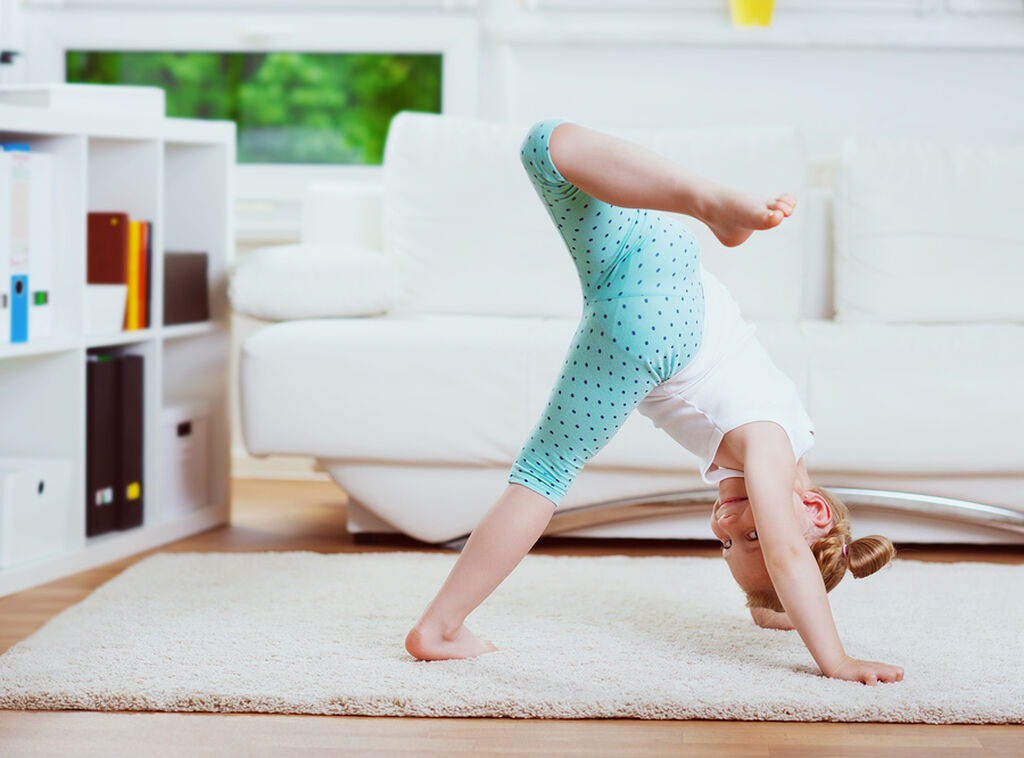
Most often, parents choose sports for girls based on their own preferences rather than considering their daughters’ unique interests. Guided by the prestige of a particular sport or by their own childhood dreams, parents bear the risk of discouraging their child from playing sports.
Read this article in full to be sure to decide on the right sports activity for your daughter, and learn how you can level the playing field and encourage a healthy lifestyle to boot.
When choosing the appropriate extra-curricular activity for a girl, take into account the distance of the sports place from home, as well as other safety factors. To free yourself from worrying about your child’s route and be able to connect with them at any moment, download the Findmykids app or purchase a smartwatch for children for your young athlete.
Contents:
- Тop 11 Best Sports for Girls
- How to Choose the Best Professional Team Sports
- What Sports Are Best for Girls With Health Issues?
- What Kind of Sports Should Girls Avoid?
- Tips for Parents
- FAQs
Тop 11 Best Sports for Girls

Sunny studio/Shutterstock.com
Girls are most often signed up for organized sports like ballroom dancing, swimming, figure ice skating, martial arts, and basketball. Female coaches can be hugely inspirational for girls, acting as positive role models and promoting opportunities for women and girls in sports.
Gymnastics, horseback riding, tennis, skiing, and snowboarding are also popular sports activity choices for girls. Your daughter’s performance in sports will be determined mostly by her interests, so keep that in mind as you pursue your options.
Please note that each sport has its own contraindications based on the child’s health condition. Be sure to familiarize yourself with them before enrolling your daughter in any sections, and consult with the coach/doctor before starting the classes!
Gymnastics
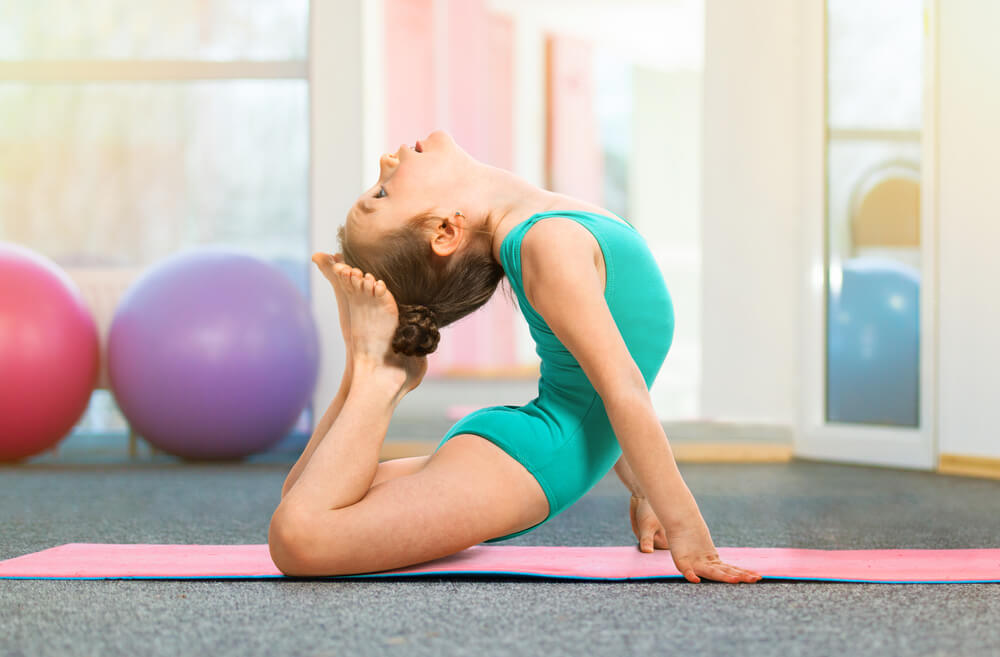
Svitlana Bezuhlova/Shutterstock.com
For gymnastics and other aerial sports, the minimum age of the child should be at least 3 years old.
Benefits of this sport:
- Engages all muscle groups
- Develops artistic qualities and the ability to be in the spotlight
- Develops the graciousness of movements
- Develops taste
- Improves goal setting and a competitive spirit
Disadvantages:
- Delayed puberty due to intense physical activity
- Possibility of hormonal disruptions
- Frequent painful feelings (from stretching)
- Exhaustion due to intense training and chronic fatigue
Personal qualities developed:
- Discipline
- Determination
- Mental toughness
Rhythmic gymnastics involves performances in beautiful outfits. Therefore, parents should be prepared to spend additional money on clothing.
Horseback riding

Prostock-studio/Shutterstock.com
This type of sport is appropriate for girls starting from the age of 9 years old.
Benefits of horseback riding:
- Develops the flexibility of the body
- Improves posture
- Strengthens the immune system by increasing the duration of being outdoors
- Eliminates chronic diseases of the cardiovascular and respiratory systems
- Enhances stress resistance
- Enriches the emotional sphere
- Improves agility and thirst for knowledge
Disadvantages:
- Highly traumatic
- Requires the purchase of expensive protective equipment
Personal qualities developed:
- Responsibility
- Resilience
- Patience
Тennis

FamVeld/Shutterstock.com
Girls can start playing tennis at the age of just 5.
Benefits from training:
- Strengthening of the muscular system
- Improvement of agility and concentration
- Endurance enhancement
- Attention improvement
- Strengthening of the eyesight organs
- Formation of the feeling of responsibility and self-discipline
Disadvantages:
- Strong strain on the joints of the legs and arms
- High risk of injuries from the ball
Personal qualities developed:
- Focus
- Tenacity
- Sportsmanship
Consult a doctor before signing up your daughter for any sports, for this activity to be fully beneficial for your child.
Winter sports and snowboarding

Olya Lytvyn/Shutterstock.com
When it comes to opportunities in sports, it’s an all-weather situation! Winter sports are appropriate for girls from the age of 7 years old.
Benefits:
- Works out all muscle groups
- Develops coordination and a sense of balance, which forms the correct posture
- Strengthens the immunity
- Increases endurance and performance
- Forms positive character traits
Disadvantages:
- Seasonality (during the warm season, you will have to look for specially equipped sites or use roller equipment)
- At first, children may experience frequent illnesses caused by training in the cold
Personal qualities developed:
- Overcoming fear
- Adaptability
- Ability to focus on the right things
Winter sports are not straightforward from a technical standpoint, but the choice of existing types of them will help to find the best option for every girl. These include skiing, cross-country skiing, downhill skiing, and snowboarding.
Ballroom dancing

Pixel-Shot/Shutterstock.com
Normally, children are accepted into ballroom dancing starting from as little as 3,5 years old.
Benefits:
- Develops artistry, a sense of rhythm, and an ear for music
- Works out the whole body
- Increases self-confidence
- Development of gracefulness and correct posture
- Strengthening of the respiratory and cardiovascular system
- Development of endurance and resistance to stressful situations
- A small number of injuries
Disadvantages:
- An expensive sport in which, in addition to the fees of a coach, you need to pay for costumes and travel to the competition sites
- Training and performance take a lot of time, which makes it difficult to combine classes with studying at school
- It is difficult to find a dance partner and to continue in this field once the dance couple splits
Personal qualities developed:
- Self-esteem and self-confidence
- Self expression
- Co-operation
When signing a girl up for ballroom dancing, you must be prepared to buy appropriate shoes, a midi skirt, and a special sports suit. In subsequent years, heels and dance costumes will be required.
Swimming
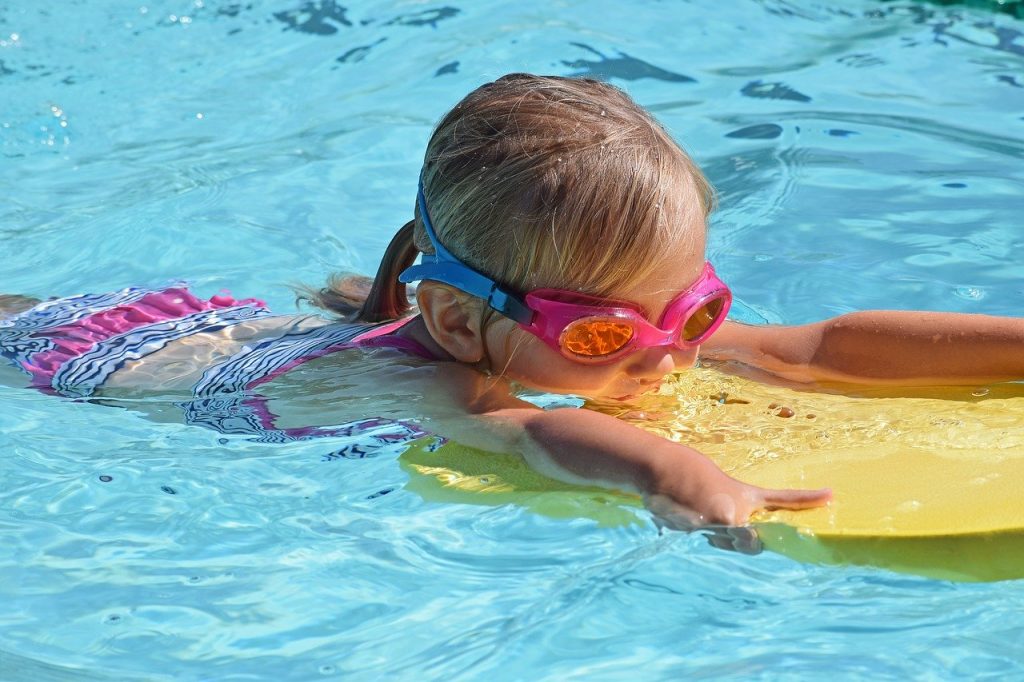
Prostock-studio/Shutterstock.com
Even though swimming classes accept children starting from the age of 3–4 years old, it is best to sign the children up for it after the age of 5 years old, once their bodies become stronger.
Benefits:
- Strengthens the immune system and improves overall health
- Develops all of the muscles of the body and the musculoskeletal system
- Develops endurance
- Strengthens the body
- Accelerates the coordination of movements
- Develops the muscles engaged in the respiratory system
Swimming is useful for children with problems with blood circulation and with diseases of the musculoskeletal and nervous systems. Lessons at the swimming pool also take place to prevent diseases of the respiratory system.
Disadvantages:
- Pool water is disinfected with bleach, which provokes allergic reactions and the development of asthma
- There is a high risk of contracting fungus in public places
- Swimmers often suffer from rhinitis and skin diseases
- Poorly dried hair after swimming can cause frequent colds
Personal qualities developed:
- Mental resilience
- Perseverance
- Accountability
For your daughter to be a frequent visitor to swimming lessons, you will need to buy a rubber cap, a one-piece swimsuit, rubber slippers, and bath accessories.
Figure ice skating
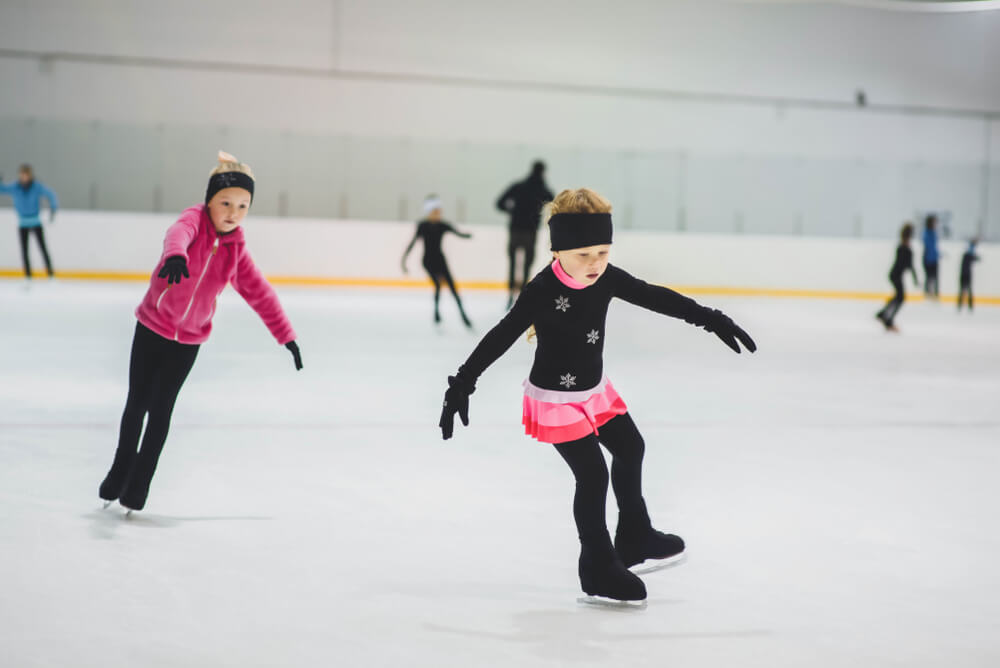
Nigmatulina Aleksandra/Shutterstock.com
Figure skating, along with other types of ice skating and team sports are perfect option for girls starting from the age of 4 years old and up.
Benefits:
- Develops agility and stability
- Speeds up the metabolism
- Improves blood circulation
- Strengthens the immunity
- train leg muscles
- Develops a musical ear, creativity, and communication skills
Disadvantages:
- Traumatic sport
- Ice arenas are available only in big cities
- Difficult to combine with studies at school
- Expensive uniforms and high fees for coaches
- Several exhausting workouts daily
- A lack of free time
Personal qualities developed:
- Emotional wellbeing
- Goal setting and time management skills
- Ability to make social connections
Parents need to buy ice skates that are adapted to the growing size of the foot, a set of thermal underwear, a tracksuit, knee pads, and protective shorts. The set of clothing that protects from the cold includes a suit, a headband, socks, and gloves.
Martial arts
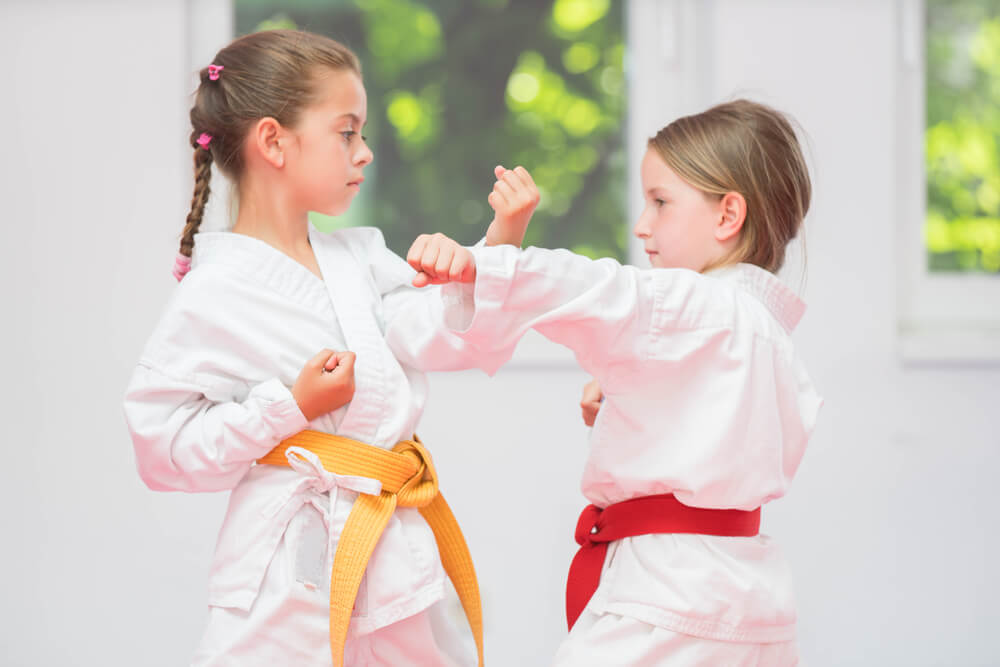
Anel Alijagic/Shutterstock.com
Girls starting from 5–6 years old can be signed up for this sport.
Benefits:
- Improves endurance, flexibility, movement coordination, and reaction
- Teaches self-defense and self-control
- Allows for the release of accumulated emotions
- Inexpensive sports gear and clothing
Disadvantages:
- High risk of injuries
- Strict discipline
Personal qualities developed:
- Confidence
- Self-discipline
- Maintaining equilibrium in the face of challenges
Basketball
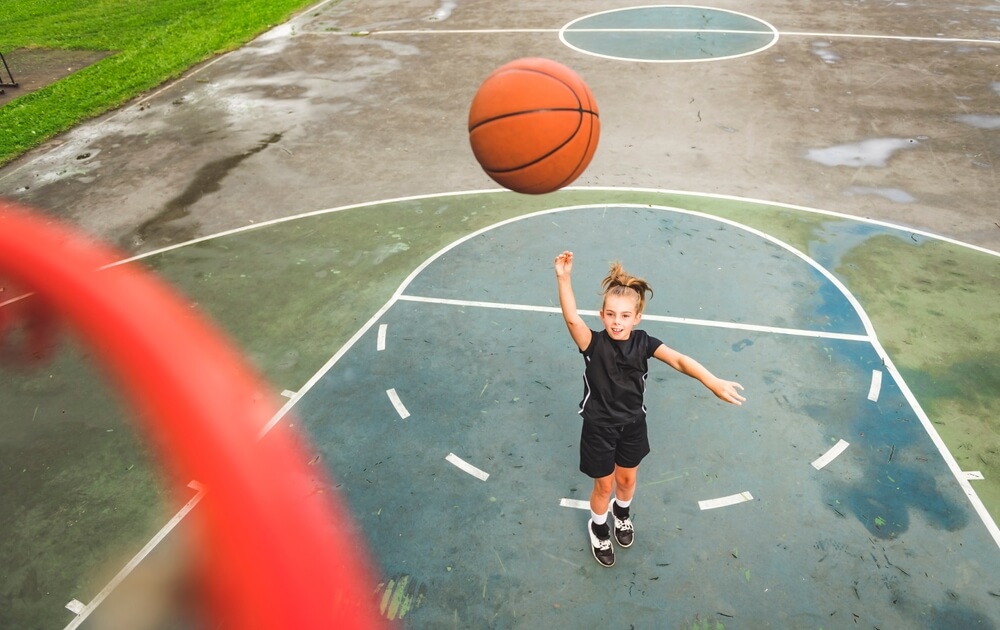
Lopolo/Shutterstock.com
Benefits:
- Develops the spine
- Improves the functioning of the cardiovascular and respiratory systems
- Forms the correct posture
- Improves endurance
- Improves reaction, movement coordination, and accuracy
- Develops the team spirit
- Develops the logic and the ability to communicate
- Allows for making decisions quickly
- A low-budget type of sport
Disadvantages:
- Risk of injury
- The impossibility of losing
Personal qualities developed:
- Endurance
- Fast thinking
- Teamwork
Field Hockey
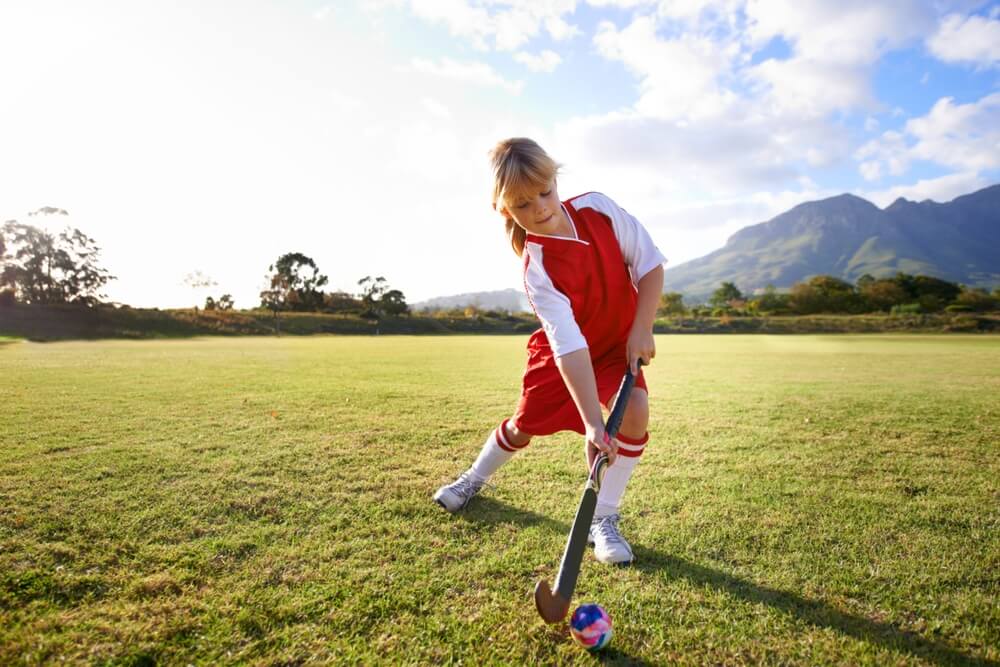
PeopleImages.com – Yuri A/Shutterstock.com
Benefits:
- Boosts cardiovascular health and oxygen flow
- Contributes to improved strength and muscle tone since it requires running, jumping, and stick work
- Enhances teamwork, agility, and decision-making skills as a fast-paced, dynamic sport
- Provides the opportunity for social connection
Disadvantages:
- Requires a significant time commitment to master and practice the sport
Personal qualities developed:
- Ability to keep composure
- Physical and mental endurance
- Skills in thinking ahead and planning
Ice Hockey

Sergey Novikov/Shutterstock.com
Benefits:
- Offers a full-body workout, improving cardiovascular health and muscular strength
- Encourages teamwork, coordination, and quick decision-making on the ice
- Develops resilience, focus, and strategic thinking through the game’s challenges
- Offers various opportunities for competitive play and sportsmanship
Disadvantages:
- Carries a higher risk of injuries, particularly related to collisions or falls on the ice
- Equipment can be expensive and pose a financial barrier to entry
Personal qualities developed:
- Determination
- Strong work ethic
- Leadership and teamwork
How to Choose the Best Professional Team Sports
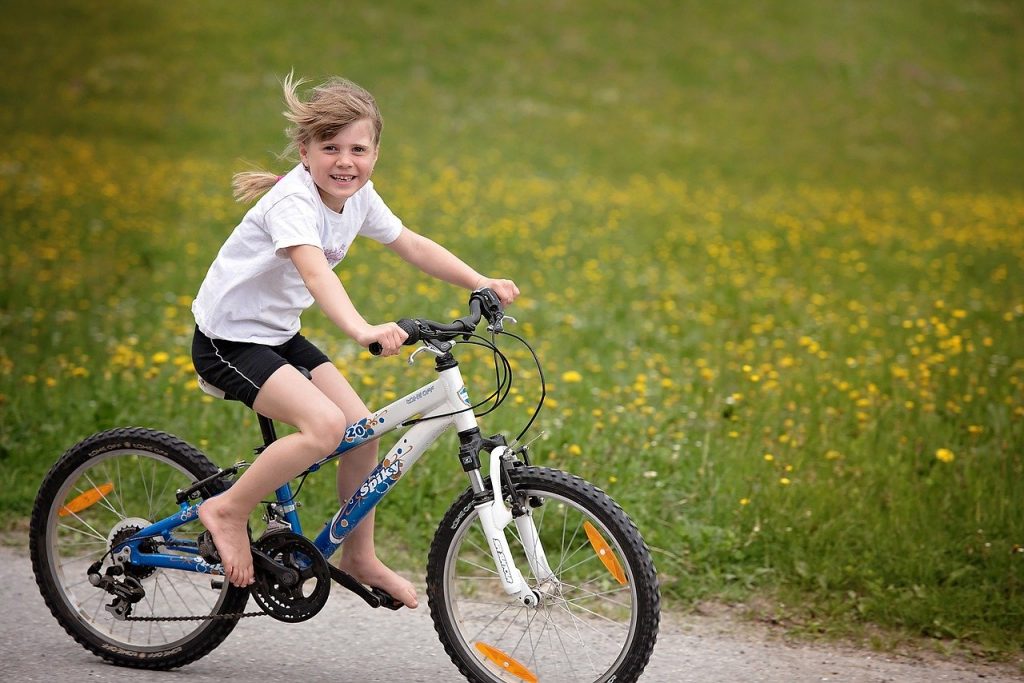
Prostock-studio/Shutterstock.com
There’s a lot to consider when you’re deciding which professional team sports to enroll your daughter in.
You can select the right sports activities according to the following factors:
- age;
- state of health;
- body constitution type;
- temper;
- the main goal;
- access to sports in your area;
- interests and performance in sports to date.
These were the main criteria for choosing a sports extracurricular activity. Secondary criteria include the following:
- teacher qualification;
- the group;
- the distance between the sports club and your home;
- the timetable of activities;
- the cost and the price of the required equipment.
The Main Goal
Figure out what the ultimate goal should be before your daughter starts playing organized sports. Do you see her as a future sports star or do you just want to fill her time up with some useful activities?
Sports can help with all of the following goals, so keep them in mind as you decide on the perfect sport:
- weight loss;
- body shape improvement;
- overall strengthening of the body;
- improvement of flexibility and posture;
- coordination improvement.
If these goals are a priority, opt for rhythmic gymnastics, tennis, figure skating, or dance.
A parent looking for a pleasant and healthy hobby, rather than performance in sports specifically, might instead choose to enroll their daughter in cross-country skiing or mountain skiing, swimming, athletics, and horse riding. These might not be team sports, but they’re still great exercise.
Body Type
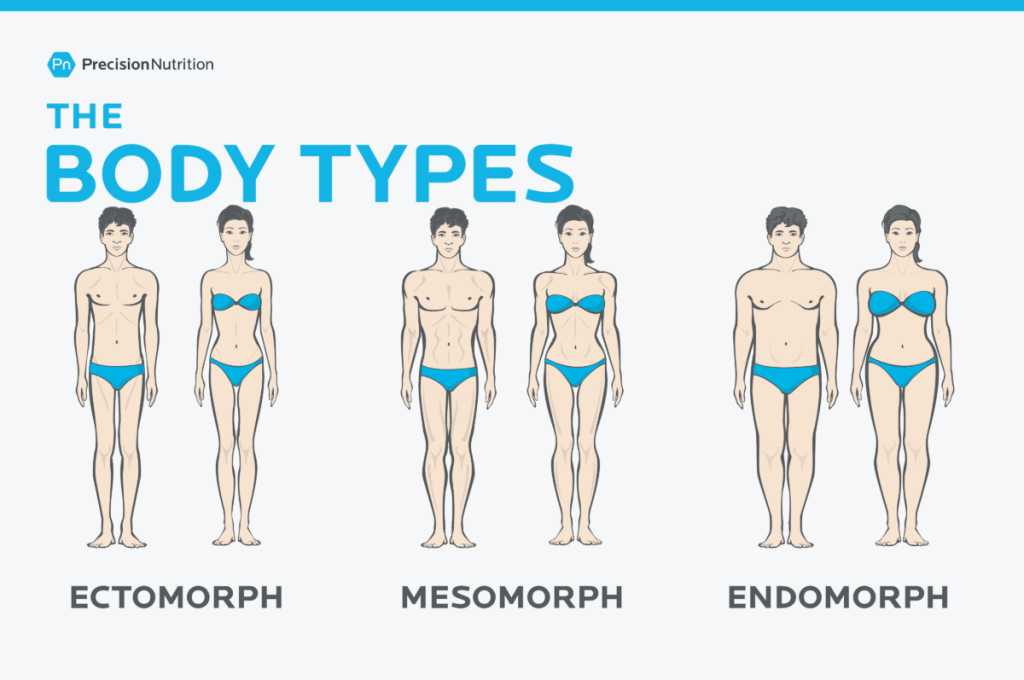
Body types
Credit: healthy-food-near-me.com
Of course, body type shouldn’t restrict the type of sport your daughter participates in. However, in general, it can influence how well-suited she is to a sport.
So what kind of body type does your daughter have—asthenic, normosthenic or hypersthenic?
Normosthenic girls have a proportional body shape, slim legs, a thin waist, and normal height.
The best options for girls with a normosthenic body constitution will be the following:
- ballroom dancing;
- gymnastics and rhythmic gymnastics;
- pair figure ice skating;
- synchronized swimming.
The asthenic body constitution features include a slender body, flat chest, long arms and legs, making them ideal for involvement in sports like these:
- cycling;
- rowing;
- athletics;
- skiing;
- basketball;
- volleyball.
Hyposthenic people have heavy and wide bones, voluminous shoulders, and a wide, but short chest. Their height is average or below average. This type of physique tends to be overweight, therefore physical activity will help to maintain the optimum body shape.
The best options for girls with a hypersthenic body type will be the following:
- stage, organized sports, traditional or modern dance;
- martial arts;
- swimming;
- horse riding;
- kids’ yoga.
Keep in mind that such girls are not always as flexible, but they have more endurance than their peers.
Again, these are generalizations. You shouldn’t restrict your daughter’s access to sports based on her body type, but instead, just use them as a baseline to get an idea of what she might excel at.
When choosing the appropriate extra-curricular activity for a girl, take into account the distance of the sports place from home, as well as other safety factors. While the acceptance of women in professional team sports has grown rapidly, there are still safety concerns to keep in mind.
⠀
In order not to worry about your child when they are on route and to have the possibility to connect with them at any moment, download the Findmykids app or purchase a smartwatch for children for your young athlete.
Age
The table below indicates the minimum age at which a child can start practicing a certain type of sports activity:
| 3–4 y.o. | 5–6 y.o. | 7–8 y.o. | 9–10 y.o. | 11 y.o. |
| Aerobics | Basketball | Biathlon | Cycling | Mountaineering |
| Swimming | Figure ice skating | Gold | Horseback riding | Bobsleigh |
| Gymnastics | Volleyball | Skiing | Rowing | Triathlon |
| Ballroom dance | Martial arts | Sports tourism | Weightlifting | Rock climbing |
| Rhythmic gymnastics | Tennis | Fencing | ||
| Athletics | ||||
| Soccer |
Personality Types
Choleric people are characterized by impulsiveness, rapid excitability, and frequent mood swings. They are easily offended and hypersensitive, however, they are very responsible. Team sports are highly suitable for such children, such as football, basketball, and volleyball.
Sanguine people are friendly, calm, and have lightning-fast reactions. They are interested in the feeling of excitement that arises from overcoming internal and external obstacles. They will prove themselves to be good in fencing, rock climbing, tennis, and other individual sports if they are taught by a good coach.
Phlegmatic people are unbothered, calm, and assiduous. They enjoy sedentary sports: chess, checkers, and e-sports. Instead of placing phlegmatic children on the chessboard, enroll them in athletics, cycling, or skiing. When they grow up, they will gladly play a game of chess, but as children, they need to engage in more physical activity.
Melancholic people are calm and balanced. These are the so-called “home lovers” who are more interested in communicating with their mothers rather than playing sports. It is not easy for them to play active games at the age of primary school. From the age of 11 years old, they may become interested in individual sports, but before that, lessons in general physical development and gymnastics will prove to be useful to them.
Discuss what kind of sports activities the girl would be interested in. Under the condition of a satisfactory state of health and in the event of a lack of ideas for sports for your child, take their personality type into account.
What Sports Are Best for Girls With Health Issues?
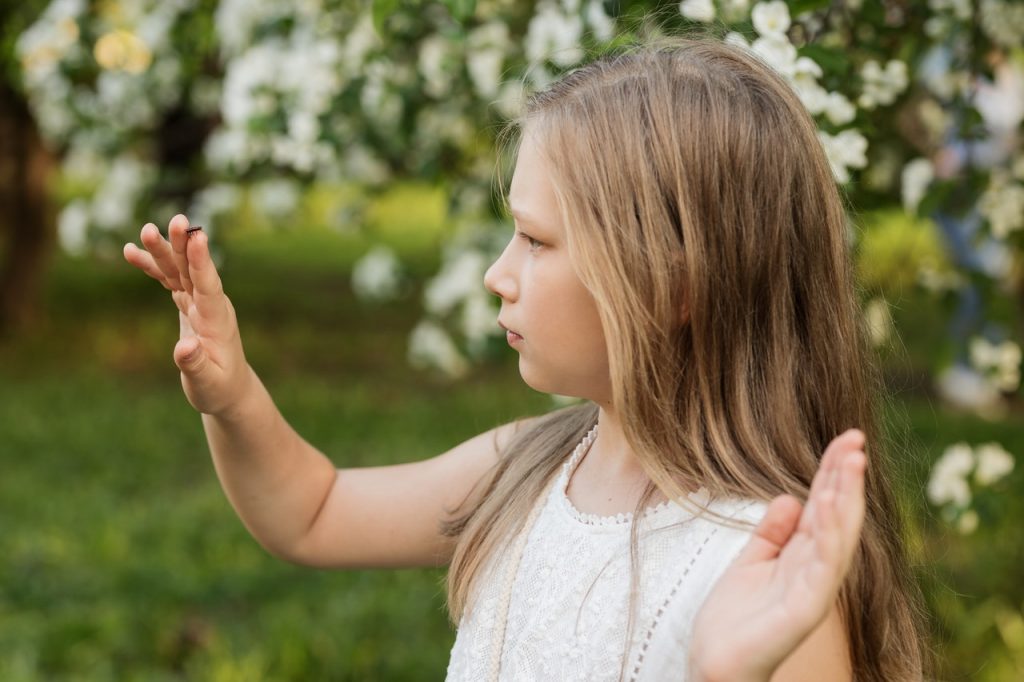
Prostock-studio/Shutterstock.com
Sports activities chosen according to a child’s preferences are frequented by children who do not have any particular contraindications to them.
The reasons to refrain from taking part in various sports activities:
- Bad eyesight is the reason not to sign up your child for tennis and biathlon.
- Severe myopia—avoid weightlifting and highly traumatic sports, which are most often the case in martial arts and horse riding.
- Problems with the musculoskeletal system are a major contraindication of gymnastics.
- Cardiovascular diseases do not allow you to practice all cardio sports such as athletics, skiing, and speed skating.
- Skin diseases are incompatible with swimming lessons.
Recommended sports for girls suffering from various diseases:
- Yoga and pilates for children are suitable for toddlers with diseases of the nervous system.
- Swimming is suitable for anyone who has no contraindications to it. This is a widely adopted sport that allows for an increase in strength, and that will be useful at any age.
- Winter sports increase immunity and improve the body’s natural defense mechanisms.
- Cardio training is recommended to strengthen the heart and blood vessels and enhance lung development. However, it needs to be practiced with the permission of the doctor.
What Kind of Sports Should Girls Avoid?
Remember that playing sports should bring benefits and not harm to your child. Do not damage your child’s childhood—do not force them to play a sport they do not enjo,y and do not overload them with excessive loads.
The “archive of Disease in Childhood” magazine published a study on the impact of sports on adolescent health, carried out by a group of scientists from Canada and Switzerland.
Researchers concluded that kids who practiced between 3.6 and 10.5 hours of physical activity per week felt well, while adolescents who did more of that time, or, on the contrary, less, felt unwell.
Girls should not be restricted from any sports based on gender. Instead, it’s important to focus on ensuring safety and providing opportunities for girls to participate in sports that align with their interests and abilities. However, it’s crucial to consider the potential risks associated with certain sports and take appropriate precautions to prevent injuries.
Ultimately, the decision about which sports to participate in should be based on individual preferences, physical readiness, and guidance from trusted healthcare professionals or coaches.
Tips for Parents

Prostock-studio/Shutterstock.com
Choose a sport that would be useful and interesting for your child and affordable for your budget. Before signing up for a sports class, go through a medical examination with your child and study the schedule of classes.
If you immediately find out that you are unable to bring your child to classes or that these lessons will clash with studies at school in the future, we strongly recommend you reconsider your choice. Meet the trainers and find out how they provide first aid in the event of an emergency, as this is of utmost importance.
A child’s predisposition to a particular sport becomes easily distinguishable at the age of 5–7 years old. When sending a girl to the sports section at an earlier age, parents rely on their instincts. Sports activities should reveal your child’s natural features.
If you enroll your daughter in a class before the age of 5 years old, take into account their body type and personality type.
Whenever possible, look for options that offer equality in sports. Are there female coaches (or even coaches in training programs—as long as there’s another woman to help, a coach in training is also completely fine)? Are the girls able to participate in the same opportunities as the boys, like local or even international competitions?
We often view the design of sports bras as the pivotal moment that ushered in the acceptance of women in sports. However, equality in sports doesn’t always exist, even though it seems like there’s a level playing field.
While most women have access to sports, that doesn’t mean it’s always easy for them to participate. Do your research and don’t be afraid to think outside of the box. You don’t have to just rely on the public schools’ offerings. Is there a local camp day? Do any professional team sports nearby offer events for young women? Research online and read girl sports thread discussions, or join social media groups to find opportunities for the girls and women in your life.
Equality in sports might seem far off, but by getting your daughter involved in sports, you can help improve the acceptance of women—and perhaps foster a lifelong love for sports in her at the same time.
FAQs
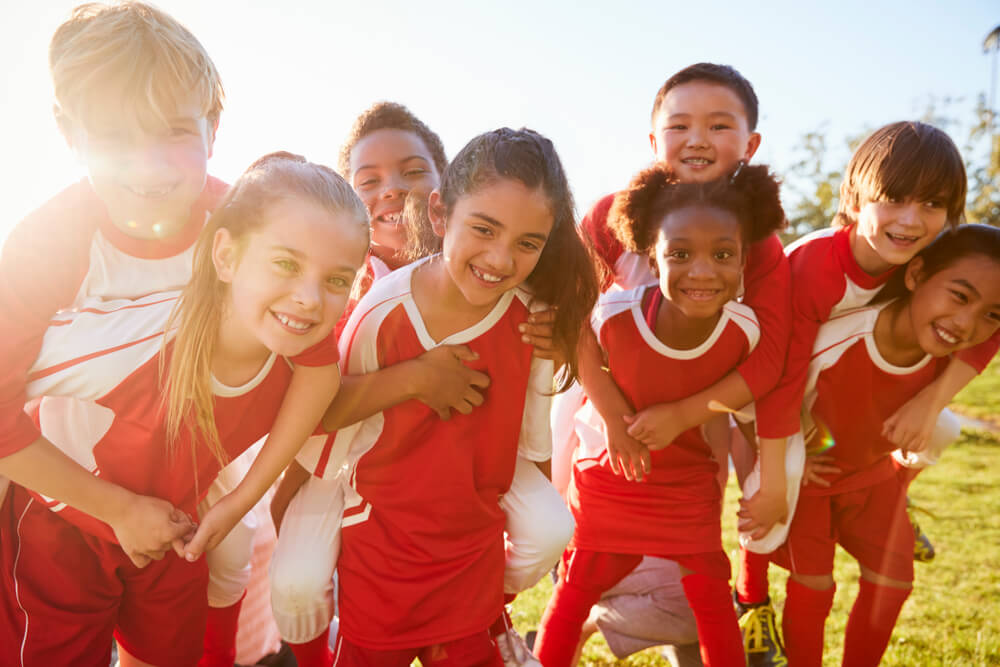
Monkey Business Images/Shutterstock.com
What is the best sport for a girl?
The best sport for a girl can vary based on her interests and physical abilities. However, some popular sports for girls include volleyball, soccer, basketball, swimming, tennis, gymnastics, and dance.
What are the top 5 female sports?
Five of the most popular girls’ sports enjoyed by younger girls, adolescent girls, and older female athletes alike include tennis, soccer, basketball, hockey, and softball. The reasons why these girls’ sports tend to be so popular are due to their level playing field and how they promote both physical and social skills, presenting great opportunities for women and girls.
What are the top 10 women’s sports?
The top 10 women’s sports in the US include soccer, basketball, tennis, volleyball, swimming, gymnastics, track and field, softball, figure skating, and dance.
What sport is mainly for girls?
Because of equality in sports, no sport is exclusively for girls, as both boys and girls can participate in the same sports. However, popular sports like gymnastics, figure skating, and dance are often associated with female athletes.
What sport is best for the female body?
There are no set sports that are “best” for the female body—all have their unique advantages and will develop certain skills or faculties. For example, yoga is great for enhancing flexibility, posture, and balance, while field hockey provides an effective cardiovascular workout.
What kind of sports can girls play?
There’s no real limit on what sorts of high school and college sports girls can play, and many experts feel that the concept of distinct boy and girl sports is outdated, as kids of either sex can essentially play all the same games as each other and should enjoy equal educational opportunities in sport, as in other areas of school. Popular sports that support the growth of women and girls include softball, hockey, soccer, and tennis.
What sports are easy for girls?
Some sports that are generally considered easier for girls to start with include swimming, dancing, gymnastics, field hockey, and tennis. These sports often offer a welcoming and inclusive environment for girls of all skill levels.
Is there a sport just for girls?
While there are sports that are traditionally more popular among girls, such as gymnastics and ballet, there are no sports exclusively reserved for girls. Girls can participate in a wide range of individual and team sports based on their interests and abilities.
What sport should a 12-year-old girl play?
Some of the best sports for 12-year-old American girls include soccer and tennis. They’re both quite popular with young female athletes, present a level playing field, and give girls with different abilities and skill sets chances to shine and grow, both physically and in their social skills.
What sport should I put my daughter in?
The best sport for your daughter will depend on her unique personality and preferences. Luckily, there are so many options available, from swimming to volleyball, that there is likely to be a sport to suit everyone.
Cover image: Prostock-studio/Shutterstock.com
Проверьте электронный ящик



















